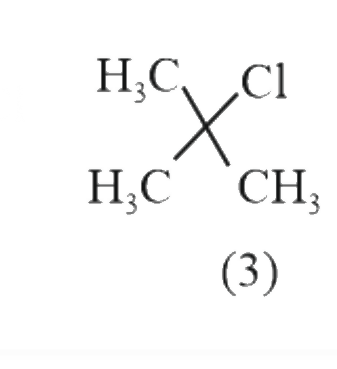Coke can be used to reduce Cu2O. Explain it based on thermodynamic view.
To explain how coke can be used to reduce Cu₂O from a thermodynamic perspective, we can follow these steps:
Step 1: Understanding Reduction
Reduction is a chemical process where a substance gains electrons or decreases its oxidation state. In the case of Cu₂O (copper(I) oxide), it can be reduced to copper (Cu) by removing the oxygen.
Step 2: Role of Coke
Coke, primarily composed of carbon, acts as a reducing agent. When coke is heated in the presence of Cu₂O, it reacts with the oxygen in the oxide to form carbon dioxide (CO₂) and reduce Cu₂O to copper.
Step 3: Thermodynamic Perspective
The thermodynamic feasibility of this reduction can be analyzed using the Ellingham diagram. This diagram plots the Gibbs free energy change (ΔG) for various reactions against temperature.
Step 4: Analyzing the Ellingham Diagram
In the Ellingham diagram, the line representing the reaction of carbon (coke) with oxygen to form carbon dioxide is below the line for the reduction of Cu₂O to Cu. This indicates that the reaction involving coke is more thermodynamically favorable than the oxidation of copper.
Step 5: Temperature Considerations
According to the Ellingham diagram, coke can effectively reduce Cu₂O at temperatures above approximately 1200°C. At this temperature, the Gibbs free energy for the reduction reaction becomes negative, indicating that the reaction is spontaneous.
Step 6: Conclusion
Thus, from a thermodynamic viewpoint, coke can reduce Cu₂O to copper because the reaction is favored at high temperatures, as evidenced by the Ellingham diagram. The ability of coke to lower the Gibbs free energy of the reaction makes it a suitable reducing agent for this process.
---
Reduction is a chemical process where a substance gains electrons or decreases its oxidation state. In the case of Cu₂O (copper(I) oxide), it can be reduced to copper (Cu) by removing the oxygen.
Coke, primarily composed of carbon, acts as a reducing agent. When coke is heated in the presence of Cu₂O, it reacts with the oxygen in the oxide to form carbon dioxide (CO₂) and reduce Cu₂O to copper.
The thermodynamic feasibility of this reduction can be analyzed using the Ellingham diagram. This diagram plots the Gibbs free energy change (ΔG) for various reactions against temperature.
In the Ellingham diagram, the line representing the reaction of carbon (coke) with oxygen to form carbon dioxide is below the line for the reduction of Cu₂O to Cu. This indicates that the reaction involving coke is more thermodynamically favorable than the oxidation of copper.
According to the Ellingham diagram, coke can effectively reduce Cu₂O at temperatures above approximately 1200°C. At this temperature, the Gibbs free energy for the reduction reaction becomes negative, indicating that the reaction is spontaneous.
Thus, from a thermodynamic viewpoint, coke can reduce Cu₂O to copper because the reaction is favored at high temperatures, as evidenced by the Ellingham diagram. The ability of coke to lower the Gibbs free energy of the reaction makes it a suitable reducing agent for this process.
Topper's Solved these Questions
- GENERAL PRINCIPLES AND PROCESSES OF ISOLATION OF ELEMENTSBOOK - AAKASH INSTITUTE ENGLISHCHAPTER - GENERAL PRINCIPLES AND PROCESSES OF ISOLATION OF ELEMENTSEXERCISE - Exercise
19 Videos
- GENERAL PRINCIPLES AND PROCESSES OF ISOLATION OF ELEMENTSBOOK - AAKASH INSTITUTE ENGLISHCHAPTER - GENERAL PRINCIPLES AND PROCESSES OF ISOLATION OF ELEMENTSEXERCISE - Assignment (Section-A) Objective type Question
30 Videos
- GENERAL PRINCIPLES AND PROCESSES OF ISOLATION OF ELEMENTSBOOK - AAKASH INSTITUTE ENGLISHCHAPTER - GENERAL PRINCIPLES AND PROCESSES OF ISOLATION OF ELEMENTSEXERCISE - Assignment (Section-D) Assertion-Reason Type Question
15 Videos
- EQUILIBRIUMBOOK - AAKASH INSTITUTE ENGLISHCHAPTER - EQUILIBRIUMEXERCISE - ASSIGNMENT (SECTION -D)
20 Videos
- GENERAL PRINCIPLES AND PROCESSES OF ISOLATION OF ELEMENTSBOOK - AAKASH INSTITUTE ENGLISHCHAPTER - GENERAL PRINCIPLES AND PROCESSES OF ISOLATION OF ELEMENTSEXERCISE - Try Yourself
33 Videos
Similar Questions
Knowledge Check
Ammonia is used in detection of Cu2+ ion because
A1. aqueous solution of NH3 reacts with Cu2+ ion to form deep blue coloured complexB2. NH3 reacts with Cu2+ ion to give blue precipitate of CuOC3. aqueous solution of NH3 reacts with Cu2+ ion to form white coloured complexD4. NH3 reacts with Cu2+ ion to give green precipitate.
Coke does not cause reduction of Al2O3. Explain ΔG∘ (in kJ mol−1) for Al2O3 : -1582, CO = - 137.2.
View SolutionHow many statement are false ?
(i) Thermodynamics is concerned with total energy of the system.
(ii) 1st law of thermodynamics can be applied on the individual particle enclosed in vessel.
(iii) Many thermodynamic properties can not be measured absolutely, so change in thermodynamics property is required for calculation.
(iv) Feasibility of any chemical reaction can not be explained by thermodynamics.
(v) When surrounding is always in equilibrium with the system, the process called reversible.
(vi) Thermodynamics predict the time of attain the equilibrium
View SolutionMicrobes can be used to decrease the use of chemical fertilisers and pesticides. Explain how this can be accomplished.
View SolutionHow does Cu2O act as both oxidant and reductant ?
View SolutionH2O2 is reduced by
View Solution
At the points of intersection of Al2O3 and MgO curves (A), ΔG∘ becomes zero for reaction,
23Al2O3+2Mg→2MgO+43Al
Above this point, magnesium can reduce alumina. Although thermodynamically feasible, Mg is not used to reduction of Al2O3 because
View SolutionWhich metal is used for reducing Cr2O3 and Mo2O3 to metal ?
View Solution


